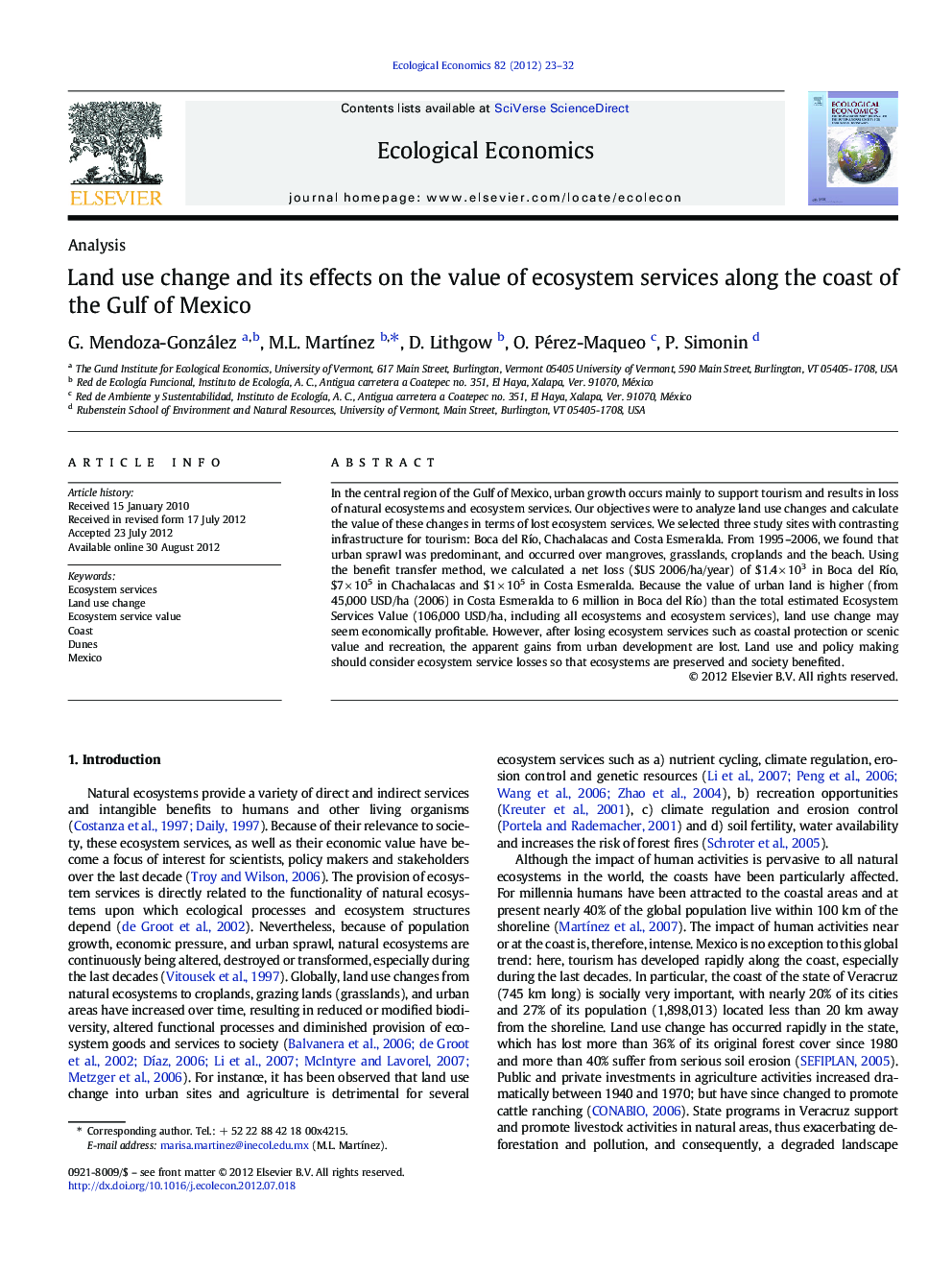| Article ID | Journal | Published Year | Pages | File Type |
|---|---|---|---|---|
| 5050184 | Ecological Economics | 2012 | 10 Pages |
In the central region of the Gulf of Mexico, urban growth occurs mainly to support tourism and results in loss of natural ecosystems and ecosystem services. Our objectives were to analyze land use changes and calculate the value of these changes in terms of lost ecosystem services. We selected three study sites with contrasting infrastructure for tourism: Boca del RÃo, Chachalacas and Costa Esmeralda. From 1995-2006, we found that urban sprawl was predominant, and occurred over mangroves, grasslands, croplands and the beach. Using the benefit transfer method, we calculated a net loss ($US 2006/ha/year) of $1.4Â ÃÂ 103 in Boca del RÃo, $7Â ÃÂ 105 in Chachalacas and $1Â ÃÂ 105 in Costa Esmeralda. Because the value of urban land is higher (from 45,000 USD/ha (2006) in Costa Esmeralda to 6Â million in Boca del RÃo) than the total estimated Ecosystem Services Value (106,000 USD/ha, including all ecosystems and ecosystem services), land use change may seem economically profitable. However, after losing ecosystem services such as coastal protection or scenic value and recreation, the apparent gains from urban development are lost. Land use and policy making should consider ecosystem service losses so that ecosystems are preserved and society benefited.
⺠In the Gulf of Mexico urban growth occurs in places of high tourism importance. ⺠We studied land use changes and calculated the value of lost ecosystem services. ⺠We selected three study sites with contrasting tourism activities and infrastructure. ⺠Urban sprawl was dominant and occurred at the expense of natural ecosystems. ⺠Land use change resulted in important losses that surpass the immediate gains of urbanization.
